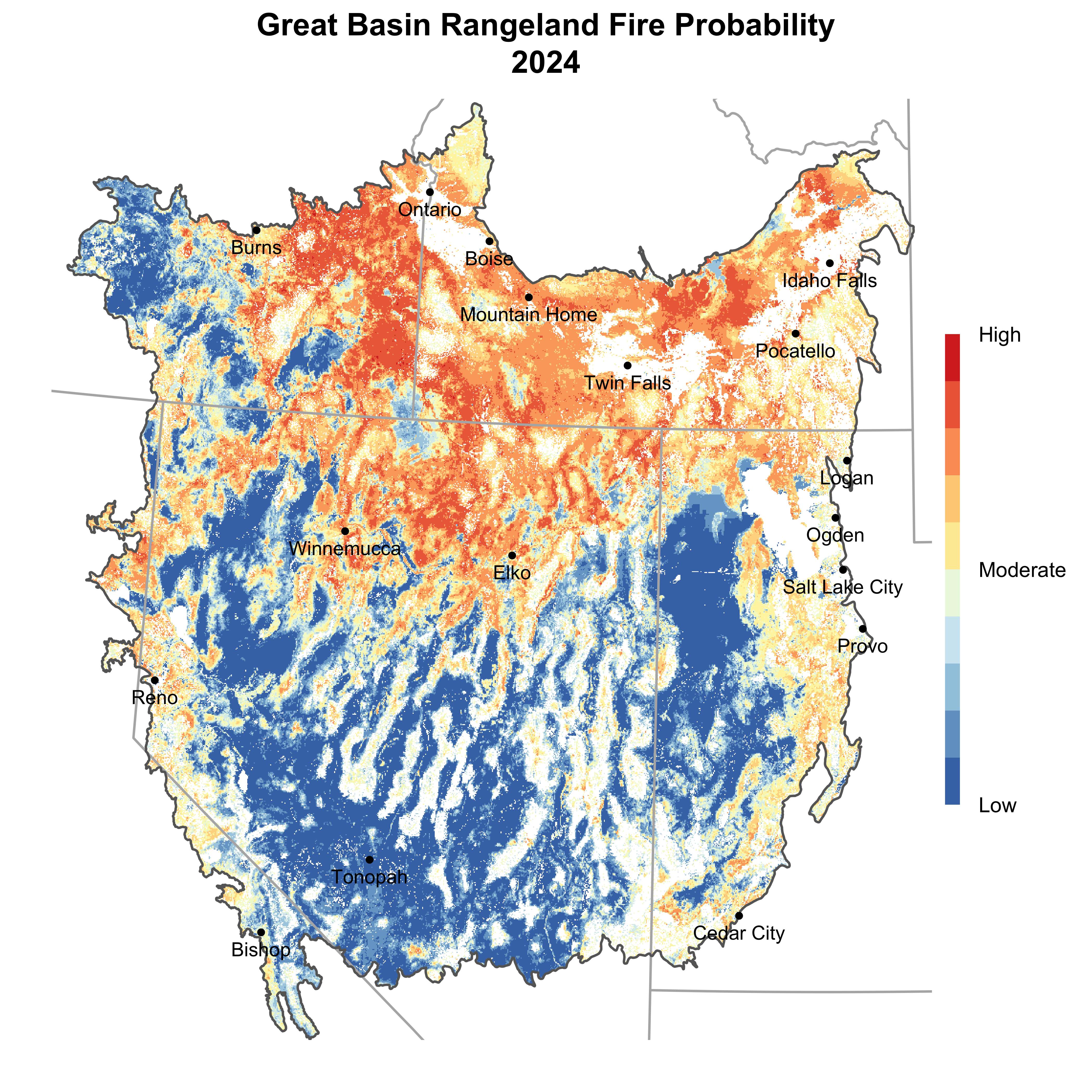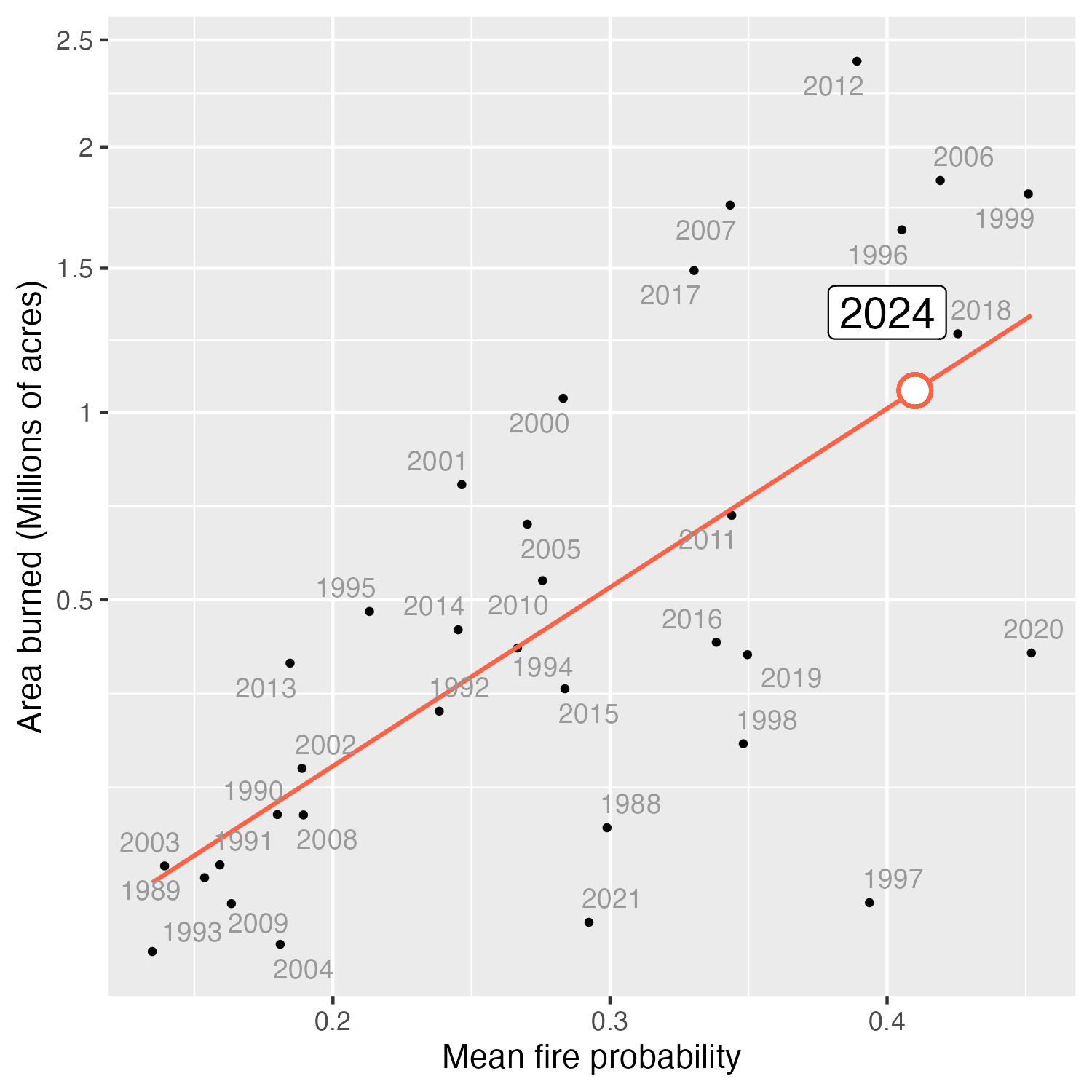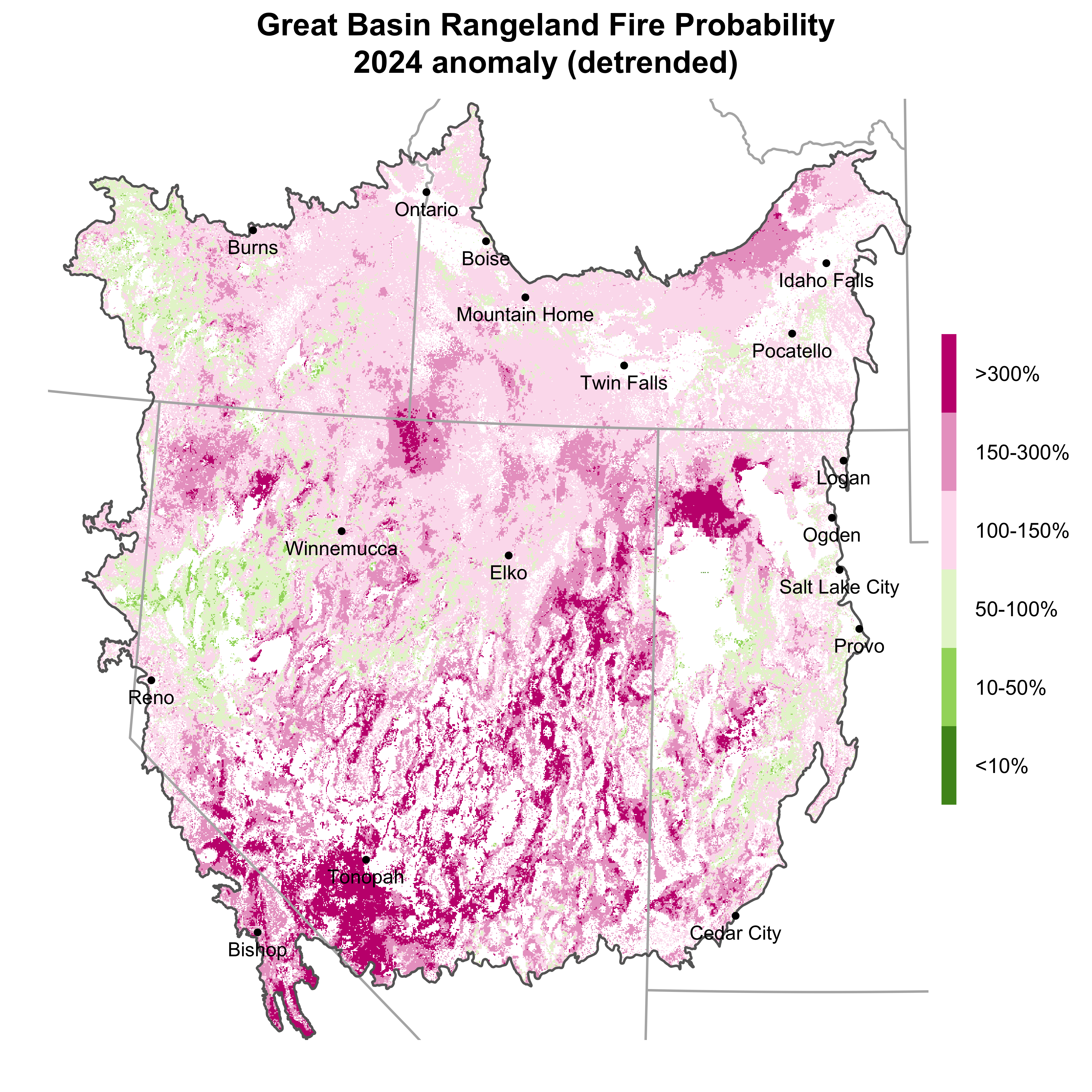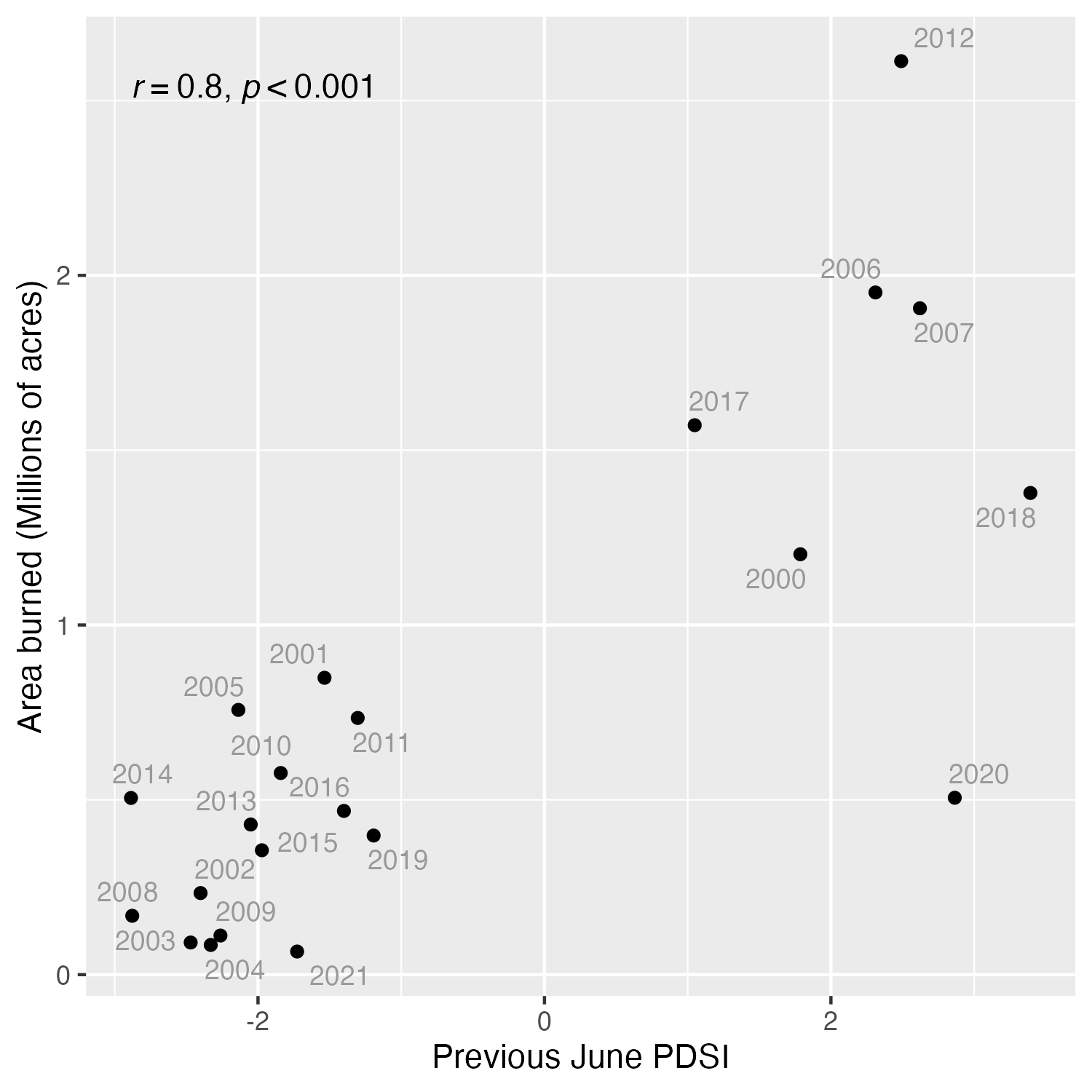Great Basin Rangeland Fire Probability
Updated March 14, 2024
This page has been updated to include the most recent modeling efforts described in Smith et al. (2022).
Where are large fires most likely to occur throughout the year given an ignition?
This map represents the relative probability of large (> 1,000 acres) rangeland fire given an ignition. Probabilities are for the entire year or fire season. The map should be used alongside other fire risk or prediction services. Probabilities are calculated using RAP biomass, RAP cover, and various climate/drought indices. Maps are typically available in early March.

How does this year compare to the past?
There is a clear relationship between the area-wide average fire probability across the Great Basin and the total area of rangelands burned that year (see figure below). 2024 is shown as a white dot along the regression line and represents a coarse prediction of the total area likely to burn in 2024. This allows us to compare how the coming fire season might relate to past years in terms of total area burned. This prediction, however, entails considerable uncertainty. Besides fuels, the severity of the fire season depends on variables such as fire weather, ignitions, and fire suppression resource availability that cannot be predicted months in advance. For example, 2020 was predicted to have high fuel loading consistent with an above-average fire season, but very little fire activity occurred. We speculate this could be related to stay-at-home orders and generally reduced travel during the COVID-19 pandemic leading to fewer human-caused ignitions.

The following map shows this year’s probabilities relative to the recent past. Warmer colors indicate areas where fire probabilities are elevated relative to expectations, and cooler colors indicate where fire probabilities are relatively low this year. Areas where this year’s fire probability is negligible (i.e., <0.01) are not colored.

Across the Great Basin, there has historically been a strong correlation between the Palmer Drought Severity Index (PDSI) in June and the total area burned by wildfires the following year. This relationship, which corroborates the importance of the previous year’s vegetation production in controlling fire in the Great Basin, has been especially strong since about 2000. The PDSI from June of last year is therefore an additional indicator of the likely severity of the upcoming fire season. Last June's average PDSI across the Great Basin was roughly 2.4, indicating wet conditions conducive to growth of fine fuels that could portend an active 2024 fire season.

Probabilities of past years and the fires that occurred (depicted by purple polygons) can be viewed in the video below. Click the video to start the animation.